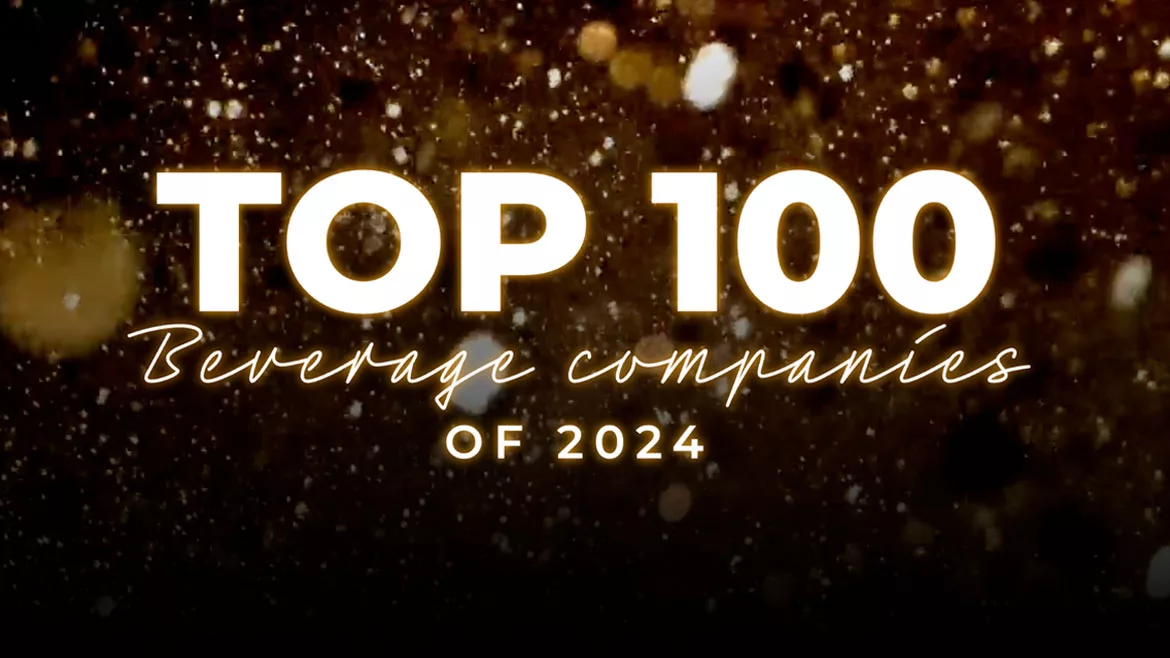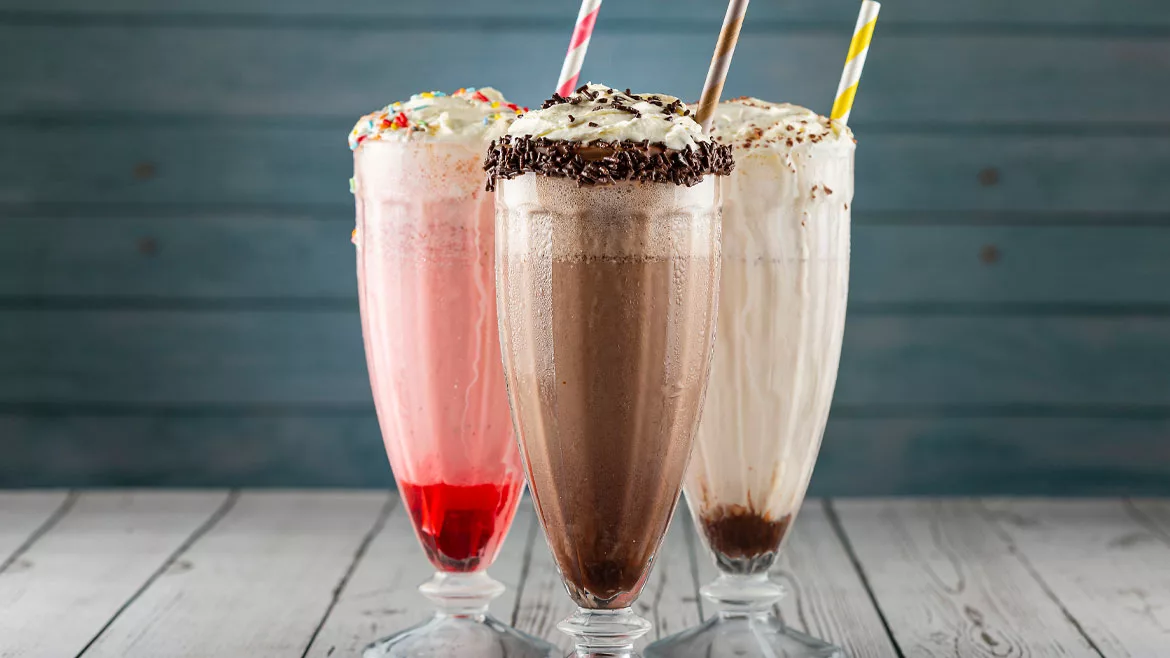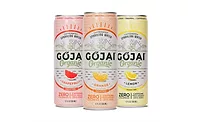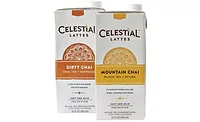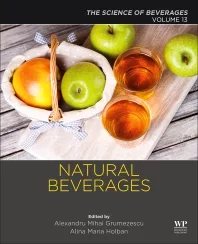Color Moves to Natural and Organic
Color Moves to Natural and Organic
By KATHIE WRICK
Beverage color can be as critical to product acceptance as flavor. The old saying, “we eat and drink with our eyes,” rings true for food and beverage products, because a product that is not attractive and does not look appetizing may never get tasted.
For decades, the means to design color into beverage
products came primarily from the use of synthetic food colors, such as
water-soluble, food-approved dyes, which were stable to heat, acid, light
and other potentially reactive ingredients. They were relatively easy for
formulators to use, and since they did not support microbial growth, they
had an almost indefinite shelf life when stored properly in laboratories
and manufacturing facilities. These features made synthetic colors more
desirable and easier to use than colors derived from plants and other
materials found in nature, which are less stable and less predictable in
their behavior.
Move to natural
The contingent of
consumers concerned with avoiding ingredients they perceive as unhealthy is
growing in the United States, and this is not news to the beverage
industry. The trend has been growing, and functional beverage segments that
moved to natural ingredients have seen strong growth.
Increased consumer focus on health and wellness has
been a key driver of new beverage trends. In the United States, the
beverage industry continues to experience strong growth in the premium,
functional, natural and organic segments, and many manufacturers in this
space abandoned certified colors for natural alternatives derived from
fruit, vegetables and even insects when they originally designed some of
their products. In regulatory language, this switch is to the
“approved” colors that are “exempt from
certification.”
It’s important to note that health issues
don’t completely go away when switching from synthetic to natural
colors either. Carmine (cochineal extract) is derived from an insect, and
is a known allergen, which is documented to cause anaphylaxis in sensitive
individuals.
Historically, the food and beverage industry has
avoided using the exempt (or natural) color additives because of the
technical challenges in formulating stable products with them. But today
they are growing at double-digit rates. Table 1 lists the colors that are
approved for foods and beverages generally in the United States.
The exempt, or natural colors are derived from fruits,
vegetables, minerals and animals. They include carotenoids (yellow to red),
anthocyanins (red, purple and blue), caramel color (light yellow to dark
brown), turmeric (yellow), annatto (yellow to reddish orange) and
carmine/cochineal (pink, red and magenta). Nature-identical colors are
produced by chemical synthesis and are considered chemically and
functionally identical to the same colorant found in nature. But the terms
“nature-identical” or “natural” have no legal
standing in the United States. In other words, the United States does not
permit the use of the term “natural” with colors as it does
with flavors, even though the color additives “exempt from
certification” are naturally derived, practically speaking.
| FDA-approved colors exempt from certification | |
| (Most natural colors used today fall into this classification.) | |
| • Annatto extract | • Grape skin extract (enocianina) |
| • Dehydrated beets (beet powder) | • Fruit Juice * |
| • Canthaxanthin | • Vegetable Juice * |
| • Caramel | • Carrot Oil |
| • Beta Apo-8 Carotenal | • Paprika and its oleoresin |
| • Beta carotene | • Mica-based pearlescent pigments |
| • Cochineal extract | • Riboflavin |
| • Carmine | • Saffron |
| • Sodium copper cholorphyllin | • Titanium dioxide |
| • Toasted partially defatted cooked cottonseed flour | • Tomato lycopene extract or concentrate |
| • Grape color extract | • Tumeric and its oleoresin |
| * Natural colors currently available on the market that fall under fruit and vegetable juices include (but are not limited to) those from chokeberry, black currant, red cabbage, carrot (black or purple), elderberry, grape and purple potato. Source: FDA Center for Food Safety and Applied Nutrition |
|
Natural formulation
Even with this comprehensive palette of natural
colors, achieving a desired color is not a simple task. The end-product
color should be thought about early in the product development process.
“The biggest challenge in innovation is natural
food colors with bright shades and strong shade performance over the life
of the product, often required for nine to twelve months’ shelf
life,” says Doug Edmonson, technical director for Sensient Food
Colors, St. Louis. “This can be especially difficult in some of the
newer fortified, enriched beverages using clear packaging. Consistent
shelf-life stability of natural colors over a reasonable consumer product
life is a significant hurdle to overcome.”
Though natural colors appear to be the wave of the
future, they are more complicated to use and need good technical support.
No single replacement exists for any given synthetic color that works in
every beverage system. Successful use of natural colors is very
application-specific, even within a beverage category. Key performance features that differentiate one natural color from
another include stability to heat, acid and light.
Considerable development work may be needed when
moving to natural color use in beverages. For example, fruit beverages and
soft drinks are too acidic for many natural colors that are not stable in
an acid environment. In addition, some beverages are complex mixtures of
many ingredients with which natural colors interact. Many nutrients added
to beverages destabilize colors. These include vitamin C and many divalent
minerals such as magnesium, iron, zinc and calcium.
Beverage companies should share development
objectives with natural color suppliers who can find technical approaches
and solutions that help meet product targets. However, overall beverage
executives should be prepared for longer product development times as the
colors and other ingredients they use “go natural.”
Natural supply quality
Another important point
is that the hue delivered by a natural color may not be standardized across
different suppliers. For example, Supplier A of grape skin extract can
control its product color enough that it can be standardized from batch to
batch over time, so minimal variation in the actual hue is delivered to its
customer. But Supplier B may have a different extraction process, or source
grape skins from a different global location than Supplier A, and even
though it also can deliver a standardized product over time, the two
products from each company may be visibly different, or perform differently
in the same beverage system.
“Many colors may have the same name, but not be
exactly the same color,” says Campbell Barnum, global vice president
of marketing for D.D. Williamson, Louisville, Ky.
Another challenge is that demand for natural colors
will be coming from all industry segments that make products that children
like. “Managing demand in a really diverse marketplace is a
significant issue for us, especially with the ‘speed to market’
approach that will be taken in making the color switch,” says Kurt Seagrist, senior vice president of colors for
Chr. Hansen.
Additionally, D.D. Williamson’s Barnum and
Steve Lauro, president of ColorMaker, Anaheim, Calif., which is D.D.
Williamson’s partner company, believe lack of standardization exists
for natural colors across the fast-growing business. “Different
extracts are created differently in different geographic regions around the
globe, so natural colors with the same name do not necessarily yield the
same color,” Lauro says. “This means that food and beverage
companies may need to form exclusive, if not dependent relationships with
natural color suppliers. Alternative suppliers for an expected hue may be
hard to find.”
“At D.D. Williamson, we are trying to
standardize our colors with a very analytical approach,” Barnum and
Lauro say. “First we are learning more about the details of crop
growth to understand the effects of decisions made at the agricultural
level that influence color. Second, we are growing in our knowledge about
the chemistry of a given color pigment in order to figure out how to
compensate for color changes.”
“With certified colors, the molecule
responsible for color is known, and the certification process ensures chemical identity and purity,” Lauro says. “The molecule(s)
responsible for color in fruits and vegetables might be known, but their
behavior when mixed with other ingredients is not so predictable. The entire industry is working to develop and
understand the chemistry of these naturally occurring pigments.”
Another major hurdle to overcome is consumer
acceptance of natural shades, which tend to be less vivid, Sensient’s
Edmonson says. Solutions to this problem and other challenges “will
come from a better understanding of crop varieties, pigment extraction,
color system formulation, UV packaging and color/additive delivery
systems,” he explains. “These issues require a broad scientific
approach to natural colorants from the farm to package and, ultimately, to the consumer.”
Innovation and opportunity
Knowing the chemistry of the desired color as well as
a beverage system is key for beverage formulators and suppliers.
“Every color is different in how it behaves from a chemistry
standpoint,” say Barnum from D.D. Williamson and ColorMaker’s
Lauro.
For example, the critical factor that determines what
is seen in the finished product is concentration for products such as
caramel, beet juice, beta-carotene from carrots and carmine. But for many
fruit and vegetable juices, such as those from black currant, carrot, red
cabbage and chokeberry, the pH of the system to which the color is added is
the final determinant of the color that is seen, Barnum and Lauro say.
Making blue and purple hues using natural colors in
acidic beverages is challenging, says John Greaves, founder and president
of Food Ingredient Solutions LLC, because the natural anthocyanin pigments
derived from fruits and berries naturally turn deep red in acid, and can
turn blue at neutral or slightly basic pH. “Though there are some
possible colorants, such as gardenia blue, which shows good stability to
heat, light and acid that might solve this problem, they are not approved
for food use in the United States, though they are used in Japan and other
parts of Asia,” he says.
In this case, innovation may simply require a petition
to the FDA. “But the petition process is sufficiently expensive that
the U.S. market for this color might not justify it,” Greaves
explains.
Other recent color innovations of interest to the
beverage industry include a natural green color. “Agency review of
our FDA petition for sodium copper chlorophyllin for food use should be
completed by year’s end,” Greaves says. “This will pave
the way for a natural green color for the first time in the United
States.”
For food companies interested in natural colors, good
green and blue colors that satisfy many customers have not been readily
available and represent an unmet need. “Copper chlorophyllin could be
a big opportunity for the bluish-green colors that many beverage companies
desire,” Greaves says. “Currently, it has limited use in the
United States, and is restricted to powdered citrus beverages. The European
Union and Japan can use it more broadly. Every beverage company I know
wants green.”
Food Ingredient Solutions also has developed a natural
red color from vegetable juices that provides a shade similar to Red 40
without having to use a carotene pigment along with it. Traditionally, this
tropical shade was made with a blend of an
anthocyanin and a carotenoid, but the latter required vitamin C to
stabilize it. The vitamin C would de-stabilize the anthocyanin, preventing
success with the desired red hue. In addition, the company has introduced a
naturally diacylated elderberry color with excellent stability and the
“label-friendly” name of “fruit color.”
GNT, Mierlo, the Netherlands, has supplied natural
colors to the United States for about 10 years. “We manufacture our
colors with water extraction and only physical rather than chemical
modifications,” says Jeanette Quinn, vice president, of GNT-USA.
“In the European Union, most are considered a fruit or vegetable
concentrate, or, ‘coloring foodstuffs’ which means no E-numbers
are required on customer ingredient lists for many of our ingredients.
“Since there is no regulatory definition of the
term ‘natural’ when applied to food colors, the definition of
‘natural’ depends on the customer,” she continues.
“For some, it means non-GMO, for others, there is concern about the
solvent used to make the extracts, and still
others want no chemical preservatives.”
In Quinn’s view, the natural color challenges in
beverages fall into three main categories: water solubility, pH (especially
when anthocyanins are used) and heat treatment. Water solubility is
obviously critical for beverages. Some carotenoids, naturally oil soluble,
require further chemical modification to aid in dissolution or dispersion
in water. Though this may not compromise the view that they are natural,
achieving organic status may be problematic.
“Using anthocyanin pigments to impart a pink
color to a strawberry-flavored dairy-based beverage will only work in
yogurt drinks, which are acidic,” Quinn explains. “Milk-based
beverages have a higher pH that will turn anthocyanins blue. You should get
a pink strawberry or raspberry flavored yogurt beverage and a
blue-ish-purple, blueberry-flavored milk drink, but not vice versa.”
Most natural colors are sensitive to high temperatures
used in retorted or some aseptic products. The possible results when colors
derived from fruit or vegetables are used in thermally processed beverage
resembles canned fruits and vegetables.
Last year, Chr. Hansen launched its new ColorFruit
line of anthocyanin blends derived from fruits and vegetables in four vibrant red shades that range from red/orange at
low pH to purple/violet at higher pH values. The line was developed to be
exceptionally stable to heat, light and ascorbic acid in a wide range of
acidic beverages, including carbonated beverages. The company says the
color has increased shelf life due to its stability to heat and light, and
the taste is neutral that it does not need masking.
This year, the company
launched a range of coloring foodstuffs that do not require E-numbers in
Europe under the FruitMax brand. The line of 20 products provides shades
from bright yellow to brown, green, red and violet, and is selectively
processed from edible fruits, vegetables, spices and other plants.
An important development
within natural color process technology has been encapsulation, which Chr.
Hansen uses in its CapColors line. The claimed advantages are improved
stability, increased brightness, reduced use of certain additives, such as
emulsifiers and reduced color migration.
Caramel colors
A widely used color considered to be natural is
caramel color. By regulation, caramel is the amorphous, dark brown material
resulting from the carefully controlled heat treatment of food-grade
carbohydrates.
“It is the world’s most widely used food
color additive,” says Brian Sethness, sales representative for Sethness Caramel Color Co., Lincolnwood, Ill.
D.D. Williamson is another leading supplier of
caramel color, and along with Sethness, has been producing it for more than
100 years. Caramel colors provide a wide range of stable colors for use in
foods and beverages, from light yellows to red-browns to very dark browns,
depending on the specific color and level of use.
Though commonly used in carbonated beverages, caramel
colors are found in almost every segment of the beverage industry because
they are exceptionally stable to the wide variety of physical and chemical
environments that comprise food systems, and therefore, are highly
versatile and easy to handle and store. And, very important today,
the word “caramel” is familiar to most consumers. Caramel
color is used in beer, ready-to-drink teas, cola and other soft drinks, and
distilled spirits.
“We have caramel colors with a yellow hue that
are even used in lemonades and other light-colored beverages,” says
Dave Tuescher, technical director at Sethness.
An eggnog shade in milk can be achieved with the use
of a light yellow, Class I caramel color, according to D.D. Williamson.
“Caramel colors are being used in the new coffee-type drinks that
deliver a milder flavor but a darker color,” Sethness’s
Tuescher adds.
Caramel colors are important for visual appeal in
cola-type carbonated beverages, and they serve other functions as well.
According to D.D. Williamson, PepsiCo patented the use of caramel as an
emulsifier back in 1971. Caramel color also helps protect beverage flavors
in clear bottles from deterioration from sunlight, and contributes body to
the mouthfeel of the finished product. Colas are one of the largest end-use
categories for caramel colors.
The biggest innovations in caramel colors are the new
organic ones that have been developed,” says Terry Geerts,
applications chemist at Sethness. Brian Sethness adds, “Customers
such as Trader Joe’s and Whole Foods have told us that packaged food
products have to use organic ingredients whenever possible for products to
be in their stores.”
Since most corn grown in the United States has been
genetically modified, making a caramel color intended for organic
certification meant a change in the traditional corn-based raw materials
used in caramel manufacture. The Sethness organic caramel colors (two
liquid, and one powdered form) uses non-GMO invert sugar (a blend of
glucose and fructose that occurs when sucrose comes in contact with acid)
as a starting material, and do not use ammonia or sulfite reactants, either
of which has historically been used in the manufacture of many well-known
caramel colors.
Both D.D. Williamson and Sethness have U.S. certified
organic facilities for liquid caramel colors.
“The demand for non-GMO sucrose has been strong
and supplies can occasionally be limited” says Sethness’s
Tuescher and Geerts. Both Sethness and D.D. Williamson agree that consumer
interest natural and organic foods is the clear driver behind innovation in
color development today. “But with all the associated restrictions, a
broad spectrum of organic caramel colors may not be likely,” Brian
Sethness says. “The organic caramels are slightly weaker in color
strength and are not always stable at low pH.”
Organic: A whole new game
As consumer interest in organic products increases,
the drive for use of more organically certified ingredients also grows.
Organic certification has three levels: the 100 percent rule, which
requires the product to be 100 percent certified organic; the 95/5 percent
rule in which products can be labeled “certified organic” and
requires 95 percent of the product to be produced organically; and the 70
percent rule in which products can be marked “contains organic
ingredients,” and mandates that 70 percent of the ingredients must be
organic.
Since most colorants are used at very low levels,
typically less than 0.5 percent, and often much lower than this, many
non-organic natural colors still can qualify for products seeking either
the 95 percent or 70 percent certification. These ingredients are
considered “organic compliant.” This means many natural colors
can be utilized in packaged foods labeled as organic without being
certified organic themselves. As a result, many color manufacturers are not
concerned with organic certification, so only a few organic colors are on
the market right now. This means that non-organic colors can accompany
other non-natural ingredients and can be used in products falling in two of
the three classes of organically labeled packaged foods.
To fit under what is called the 95/5 rule, 5 percent
of non-organic ingredients must be on the USDA National Organic
Program’s list of “allowed” substances (some of which are
chemically synthesized, such as vitamins) and not on its list of “prohibited” substances (some of which
are not synthetic). The color must not be
produced by chemical processing or changed from a naturally occurring form
unless done so via a natural process. It may not contain synthetic
ingredients, except those allowed on the National List. The processor also
must show a good faith effort to find a commercially available organic
alternative.
Until recently, natural colors were on the National
List of allowed substances simply stated as “colors, non-synthetic
sources only.” The USDA/AMS final rule issued Oct. 16, 2007, has
removed them from exempt (allowed) status because the ingredient category
did not receive a formal recommendation for inclusion on the list from the
National Organic Standards Review Board (NOSB) when the regulations were
first promulgated, and they were included in
the original final rule. They are now under review through the petition
process, and interim final rules have been prepared for all natural color
petitions submitted. This does not mean that the colors are certified
organic, but that colors are allowed in food products that meet either the
95 or 70 percent organic rule. The colors industry expects regulatory news
sometime this fall regarding what “certified organic” means for
natural colors, which, right now, are organic-compliant.
Some natural colors that undergo chemical processing
may not qualify for inclusion on the National List, so before a processor
formulates any organic product, it’s best to know the organic
standards, form an organic-processing plan and then have it reviewed by a
USDA certifier early in the development stage.
But natural colors with organic certification are
emerging, nonetheless, and some are available to beverage formulators.
Class 1 caramel colors have certified organic status and are on the market
now. They are produced with non-GMO invert sugar and no added sulfite or
ammonia. Other organic natural colors are in the development phase. Some
natural colors will likely not be certified organic based on either
specific NOP prohibitions or because of the principles behind the NOP.
These include:
• Nature-identical carotenoids
(which are chemically synthesized).
• Copper chlorophyllins (which are semi-synthetic
derivatives of chlorophyll).
• Carmine, or cochineal extract (chemical agents such
as sulfuric acid, stannous chloride and/or potassium oxalate are used to precipitate the red color after it has been water-extracted from the
cochineal insects known for their color).
• Tomato lycopene (extracted with ethyl acetate solvent, which is removed by vacuum stripping).
• Riboflavin (which is chemically synthesized).
• Titanium dioxide (chemical extraction process used
to obtain TiO2 from its ore).
To be organically certified ingredients, the
extraction solvents currently used for fruit and vegetable extracts may
have to change to accommodate NOP standards. In many cases, this could
create an extraction product that is chemically different, with different
behavior in food and beverage systems.
As long as natural colors can still be used in organic
products without certification, suppliers will have to independently
evaluate whether the resources required for their natural colors to become
certified organic will positively impact their sales with beverage
customers who seek the USDA organic seal. The seal is permitted for
products certified as 100 percent organic or have 95 percent of the product
organically produced.
Certified colors
The Food and Drug Administration regulates color
additives, which are classified as either certified or exempt from
certification. Certified colors intended for food use are synthetic
compounds produced through organic chemistry, that have been assigned a
Food, Drug and Cosmetic (FD&C) number.
Color suppliers provide synthetic colors as either
dyes or in a form called “lakes.” Dyes dissolve in water, and
therefore are widely used in beverages. Synthetic certified food dyes are
not soluble in oil, but dyes that are formed into lakes are. Lakes are
formed when a colored dye is attached to an insoluble substrate, most
commonly aluminum hydrate for lakes with food applications. They do not
dissolve in water as synthetic dyes do, and impart color through
dispersion, especially in products containing fats and oils, or in products
with insufficient moisture to dissolve dyes. Most beverages utilize the
water-soluble dyes.
| FDA FD&C dyes and lakes pounds sold (in the United States) |
|||
| FD&C Primary | 2007 | 2006 | 2005 |
| Blue No.1 | 533,845.28 | 593,380.93 | 673,211.84 |
| Blue No.2 | 460,481.02 | 527,028.53 | 395,065.60 |
| Green No.3 | 14,082.70 | 16,436.18 | 13,747.45 |
| Red No. 3 | 176,808.00 | 208,430.45 | 260,850.90 |
| Red No. 40 | 5,250,001.24 | 5,620,508.88 | 4,987,779.52 |
| Yellow No. 5 | 3,463,170.36 | 3,337,658.86 | 2,999,179.24 |
| Yellow No. 6 | 3,108,366.64 | 3,079,142.14 | 2,796,988.28 |
| Citrus Red No. 2 | 3,968.27 | 2,645.53 | 837.75 |
| Subtotal | 13,010,723.51 | 13,385,231.50 | 12,127,660.58 |
| FD&C Lakes | |||
| Blue No. 1 Alum. | 433,741.06 | 448,712.28 | 460,081.70 |
| Blue No. 2 Alum. | 224,055.67 | 221,550.49 | 247,179.92 |
| Green No. 3 Alum. | |||
| Red No. 40 Alum. | 1,767,346.47 | 1,634,387.77 | 1,553,588.51 |
| Yellow No. 5 Alum. | 1,381,192.21 | 1,249,115.84 | 1,232,240.63 |
| Yellow No. 6. Alum. | 1,259,835.21 | 1,187,998.23 | 1,359,419.58 |
| SUBTOTAL | 5,066,170.62 | 4,741,764.61 | 4,852,510.34 |
| Total Certified Colors & Lakes | 18,076,894.13 | 18,126,996.11 | 16,980,170.92 |
| Source: Summary of FDA FD&C Certified Color Reports 2000-2007, FDA Center for Food Safety and Applied Nutrition | |||
The chart shows how FDA certification of dyes and lakes has changed over time since 2005. Since 2000, the total poundage of certified FD&C colors has increased about 18 percent, with the more popular colors, Red No. 40, and Yellow No. 5 and Yellow No. 6 contributing substantially to that growth. Although certifiable color additives have been called “coal-tar” colors because of their traditional origins, today they are synthesized mainly from raw materials obtained from petroleum.
Looking for a reprint of this article?
From high-res PDFs to custom plaques, order your copy today!
